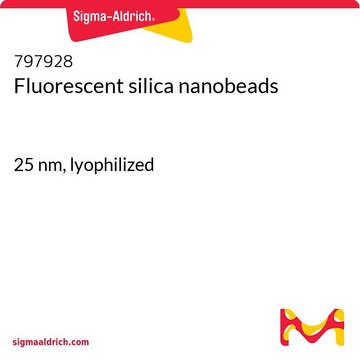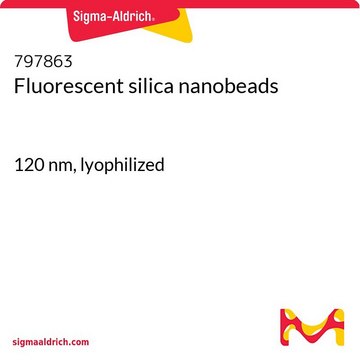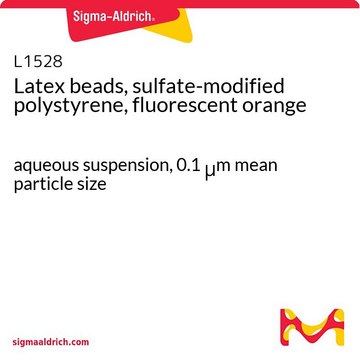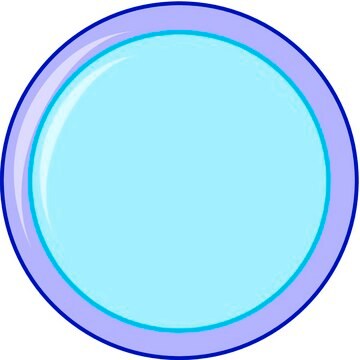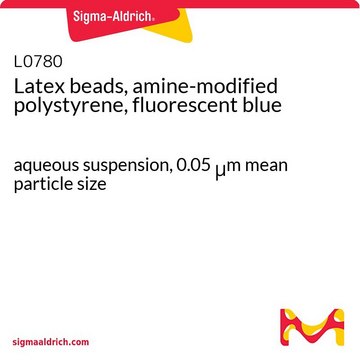797898
Fluorescent silica nanobeads
90 nm, lyophilized
Synonym(e):
Fluorescent beads, Fluorescent nanoparticles, Silica nanoparticles
About This Item
Empfohlene Produkte
Qualitätsniveau
Form
powder
Partikelgröße
90 nm
Fluoreszenz
λex 590 nm
UV-Absorption
λ: 570 nm Amax
Lagertemp.
2-8°C
Suchen Sie nach ähnlichen Produkten? Aufrufen Leitfaden zum Produktvergleich
Verwandte Kategorien
Anwendung
Lagerklassenschlüssel
11 - Combustible Solids
WGK
WGK 3
Hier finden Sie alle aktuellen Versionen:
Analysenzertifikate (COA)
Die passende Version wird nicht angezeigt?
Wenn Sie eine bestimmte Version benötigen, können Sie anhand der Lot- oder Chargennummer nach einem spezifischen Zertifikat suchen.
Besitzen Sie dieses Produkt bereits?
In der Dokumentenbibliothek finden Sie die Dokumentation zu den Produkten, die Sie kürzlich erworben haben.
Kunden haben sich ebenfalls angesehen
Artikel
luorescent nanobeads offer great potential for many applications in both basic and applied research. In the recent past, scientists have been offered a wide range of technical solutions in fluorescence imaging, enabling a significant advancement in fields such as microscopy and diagnostics. However, such optical labels mostly spanned the microscale range and/or suffered from limited optical performance and versatility. Recently, the progress of nanoscience has enabled the fabrication of accurately controlled nanostructures with tailored optical properties, and this is disclosing completely unexplored avenues and exciting possibilities in many research areas.
Biomaterials science involves the design and fabrication of smart materials for studying, directing, or mimicking biology. For successful integration of biomaterials in biological research, a meaningful understanding of biological systems is required.
Unser Team von Wissenschaftlern verfügt über Erfahrung in allen Forschungsbereichen einschließlich Life Science, Materialwissenschaften, chemischer Synthese, Chromatographie, Analytik und vielen mehr..
Setzen Sie sich mit dem technischen Dienst in Verbindung.